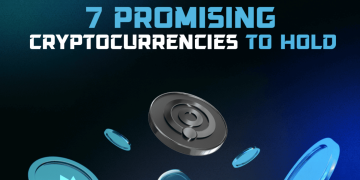It’s been a hectic week for traders, as Bitcoin’s price is affected by the German Government selling a portion of its $3 billion BTC windfall, and the hacked exchange Mt. Gox finally agreeing on a repayment schedule for the ten-year-old BTC coins.
But while most of the market is down, three innovative cryptos remain unaffected by the falling Bitcoin price; Injective (INJ), Near Protocol (NEAR), and DTX Exchange (DTX).
Read on to find out more about why these projects are so special.
Injective (INJ) makes trading on the blockchain more efficient
Injective (INJ) Protocol is a Layer 2 blockchain built with finance and interoperability in mind.
It serves as a DEX (decentralized exchange) but with a difference.
Unlike CEXes who use order books (such as Binance, one of Injective (INJ)’s major backers), most DEXes use an AMM (Automated Market Maker) system. This is handy because even if there isn’t another person waiting to make the other side of the trade, you can always swap.
The downside is having to approve transactions and pay gas fees every time, which can be expensive and slows down trading.
Instead, Injective (INJ) offers a DEX with an order book, combining the best of both worlds and making trading more speedy and efficient. But unlike CEXes, it is transparent, because the order book is decentralized and trackable on the blockchain.
Injective (INJ) is growing its team as last month they advertised roles such as ‘Growth Marketing Manager’ ‘Technical Product Manager’ and ‘Integrations Engineer’.
We can see the effects already as Injective (INJ) recently integrated with the blockchain search protocol, The Graph.
Injective (INJ) is growing in popularity, as data from Defilama shows. In December of last year, the chain had a mere $12.8 million in TVL (Total Value Locked). Now it’s up to $127 million.
Injective (INJ) is up by 12% on the weekly, showing that the recent Bitcoin price FUD is not affecting it.
Near Protocol (NEAR) mixes speed, cloud storage, and AI
Near Protocol (NEAR) is another blockchain that is on the up, even as Bitcoin’s price goes down – posting gains of 19% on the 1-week chart.
Like Injective (INJ), Near Protocol (NEAR) focuses on scalability and speed. Their solution is to use a technique called sharding. And like Injective (INJ), Near Protocol (NEAR) is supported by TradFi, with Grayscale recently offering a NEAR trading trust.
Near Protocol (NEAR) combines the traditional with the blockchain, by providing cloud storage, a bit like Amazon’s AWS. The difference is that it is decentralized, meaning that no one entity controls everything. This makes it easy and secure for developers to build Dapps on Near Protocol (NEAR).
Near Protocol (NEAR) was originally built with AI in mind before they pivoted, but are now returning to their roots.
The chain says it aims to build a “collaborative and user-owned AI ecosystem… secure, decentralized, and … open source” with the overall aim to put the wellbeing of humans before AI.
DTX pushes boundaries of TradFi and DeFi with new hybrid Exchange
What do NEAR, INJ, and DTX have in common? They are all protocols that are taking the best of traditional and centralized ways of doing things, and mixing it with the advantages of the blockchain.
DTX Exchange is a new DEX being built on Ethereum, but with a difference.
Unlike say, Uniswap or Pancakeswap, DTX offers far more than just crypto trading. People can trade stocks like Apple, Meta, or Nvidia, tokenized precious metals, FX, futures, and more, and with high leverage.
The decentralization of DTX means that people do not have to do KYC, and this opens the financial market to many who are currently excluded from TradFi, due to regulations and in-country restrictions.
Like Near Protocol (NEAR) and Injective (INJ), the DTX Exchange (DTX) team knows that speed is important, and offers super low latency execution of just 0.04 seconds.
Unlike the other two projects, DTX exchange is new, meaning that the growth potential is much higher. DTX is up by 200% this month because it is in presale, and will go up by another 200% before it launches on the open market.
Experts predict that the token could rise by 10,000x or more, given the success of similar but less well-rounded protocols such as existing CEXes and DEXes like Binance or 1inch.























